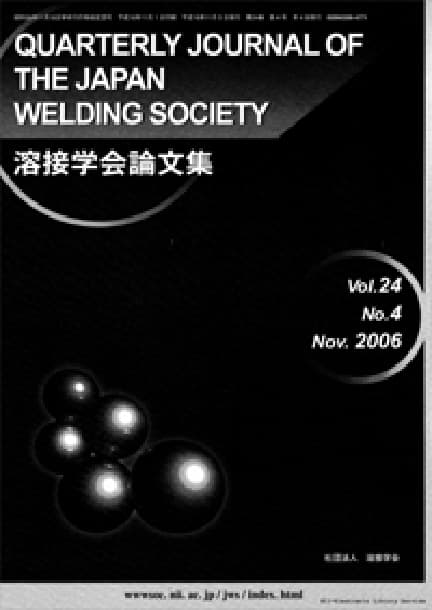An investigation on a CTOD calculation formula with various crack length-to-width ratios (Bx2B, SE(B) specimen)
Tomoya KAWABATA, Tetsuya TAGAWA, Yoichi KAYAMORI, Shuji AIHARA, Yukito HAGIHARA
pp. 57-66
DOI:
10.2207/qjjws.34.57Abstract
The authors have already established a new CTOD calculation formula, and have been revised a CTOD testing standard of WES1108 in the Japanese Welding Engineering Society by using this formula. Because the fatigue pre-crack tip should be placed in the specified microstructure such as HAZ for the critical CTOD evaluation of welded joints, the next step is the application of the formula to various crack length-to-width ratio, a0/W, conditions, especially for shallow crack specimens. In the previous work, a rotational deformation was apparently observed, and the plastic rotational factor, rp, was described as a function of wide a0/W range. However, a simple use of rp did not result in a better CTOD estimation for shallow crack specimens.
In the present work, another way of calculating CTOD was developed by the numerical investigation of single edge notch bend, SE(B), specimens with various a0/W. Non-linear crack opening profiles were dominant for smaller a0/W specimens than 0.2 due to plastic deformation behind their crack tips, or a straight crack opening profile deviated from a triangle side assumed by the plastic hinge model for a0/W =0.7. In this paper, a correction factor of the plastic component of clip gauge displacement, CVp, was proposed considering non-linear crack opening and crack profile deviation, and it was demonstrated that CVp gave a better CTOD estimation than current CTOD formulae such as BS7448 and ASTM E1820 for the wide range of a0/W.
Readers Who Read This Article Also Read
ISIJ International Vol.53(2013), No.4
QUARTERLY JOURNAL OF THE JAPAN WELDING SOCIETY Vol.34(2016), No.1
Kou kouzou rombunshuu Vol.23(2016), No.92










